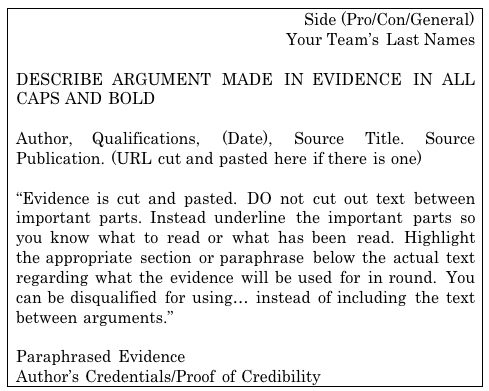Here is the compiled document of the Beyond Resolved Public Forum Camp Directory. This contains the camp dates, prices, and contact information as of May 2014.
Please check in with the camp itself for updates past the date of this post.
Here is a repost of my Post from 3/28/2014 regarding Selecting a Public Forum Summer Camp.
I must admit my biases from the start. I worked at the Stanford National Forensics Institute for four years and think that SNFI has a wonderful PF program (I helped start it after all). That does not mean that SNFI is the only camp worth going to – selecting a camp is about finding the best fit for you. This means you’ll be doing impact analysis for your own life to figure out which camp to attend.
One important note is that the inaccessibility of Public Forum Debate Camps (due to cost) is one of the main reasons I wrote Beyond Resolved. This book is the distillation of all my main lectures and coaching from SNFI and my years at St. Francis HS. I highly encourage you to get a copy, whether you go to debate camp or not, to use as your study guide this summer. This is not a shameless plug (I don’t make all that much from book sales), but more an honest encouragement to work on your debating in whatever way you can. For many of us, (I didn’t attend a PF Summer Camp in high school), a summer camp is out of our budget range. A book, however, is not. Check it out here for yourself.
On to the impact analysis of camps…
Selecting a Public Forum Debate Camp
How do you know what will be the best learning experience for you this summer? Here’s a checklist of things to consider as you look at Public Forum Debate camps.
- What skill levels does the camp target? Many camps offer a variety of programs, ranging from beginner workshops to advanced workshops. Know your skill level and know what kind of program you are looking for. Many camps provide an introductory/beginner workshop and nothing else. If you are a more advanced debater, you may not get that much out of such a camp.
- How many practice rounds are offered? Practice rounds are one of the most important parts of a debate camp. These allow you to get concrete feedback on your personal delivery and argumentation style. Make sure the camp includes practice rounds. Most camps will run an “in camp” tournament towards the end of the program to include rounds.
- What concrete skills will be taught and discussed? Most camps will advertise their program with a list of lectures that will be given at the camp. You’re always going to have coverage of case writing, rebuttal, delivery, and the basics of Public Forum. Look into what else the camp offers – are there electives? advanced topics such as framework and topic analysis? topic lectures on politics, economics, philosophy?
- What is the lab to lecture ratio? Labs (or seminars) are the small groups assigned to one faculty member throughout the camp program. This is where you will get the most intensive feedback and training. Lectures are generally for everyone in the PF program and are more like a college class. You want to make sure your camp has a balance of labs and lecture because both are necessary for skills improvement. Don’t select a camp that is too much lecture and not enough lab.
- What is the faculty to student ratio? The less students per faculty member, the more personalized an experience you will have.
- What is the faculty’s experience and reputation? You may not know much about the camp’s faculty, but you should check out the faculty bios on the camp’s website. You can also ask your coach about the camp’s reputation. What I would look for is Public Forum specific experience and success debating (if the faculty person is a debater).
- Where is it located and how much does it cost? Location can greatly affect your selection if you want to find something close to home. The further away, the more expensive the plan ticket to camp. Also, many camps offer a commuter option that may save you a lot of money if you live near a camp. Finally, camp cost is a big factor. Know your family’s budget for camp going in to the selection process. Just so you know, some camps can cost upwards of $2000 and that is before the cost of travel. Perhaps consider getting a summer job, babysitting, mowing lawns, whatever you have to do to get yourself to camp.
- Ask someone who has gone to the camp about their experience! I highly recommend speaking with someone who has attended the camp before about their experience. Websites may look pretty, but the camp experience could be different. Get on the ground reviews whenever you can!
- What is the application process? Make sure you note what type of application process exists for the camps you are considering! It would be horrible to miss the deadline to sign up.
- Check out my camp reviews in the coming weeks. I will be looking at camps across the country by location (West, Midwest, South, and East) and breaking down the facts for you: Dates, Deadline to Apply, Price, Practice Rounds. Topics Covered and My Thoughts on the camp.
Let me know what you need to know so I can give you feedback on your camp selection process. Remember all emails go to beyondresolved@gmail.com. If you have any questions regarding the SNFI experience I will field those as well.
Best of luck selecting your summer camp!
Cheers!
Ashley

